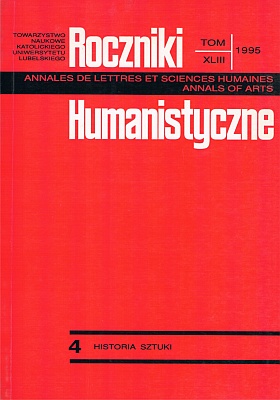Drabina snu, czyli idee „sztuki życia” w Kole Bożym Andrzeja Towiańskiego
Abstrakt
The Divine Circle of Andrzej Towiański (1799-1878), the circle which was a special religious "movement" bearing a mystical character, played an important role in the life of Polish people living abroad in Paris in the 1840s. Within the orbit of its influences remained for some time outstanding poets, such as Mickiewicz or Słowacki. An ardent confessor of the Circle's idea was also Walenty Wańkowicz, one of the more interesting Polish painters of the period. The Divine Circle was popular with poets and artists, which was surprising, since Towiański himself severely condemned and depreciated the artistic output and its basic tool - the imagination (in the romantic sense of the word) as an obstacle on the way to spiritual renewal, being one of the main aims of the Circle's mission. Towiański allowed, however, for more selected forms of effigies, which - referring to the tradition of religious iconography and copying its patterns, were supposed to serve as means to remind and make present some contents important from the point of view of the Circle's doctrine. Wańkowicz made a few such compositions, out of which the most famous is Napoleon over the Map of Europe (1841).
However, a much more important role Towiański attributed to the painting in another sense, that is the dream painting. According to him dreams came from God and therefore they revealed some essential meaning, available only due a special explanation. The master himself took care about its accuracy and "orthodoxy". As a matter of fact the point was that dreams were much more easily subject to interpretation whose sense and limits were set by Towiański himself. Ambiguity and vagueness of dreams was a safeguard of compatibility with the doctrinal aims of the Master.
Copyright (c) 1995 Roczniki Humanistyczne

Utwór dostępny jest na licencji Creative Commons Uznanie autorstwa – Użycie niekomercyjne – Bez utworów zależnych 4.0 Międzynarodowe.





